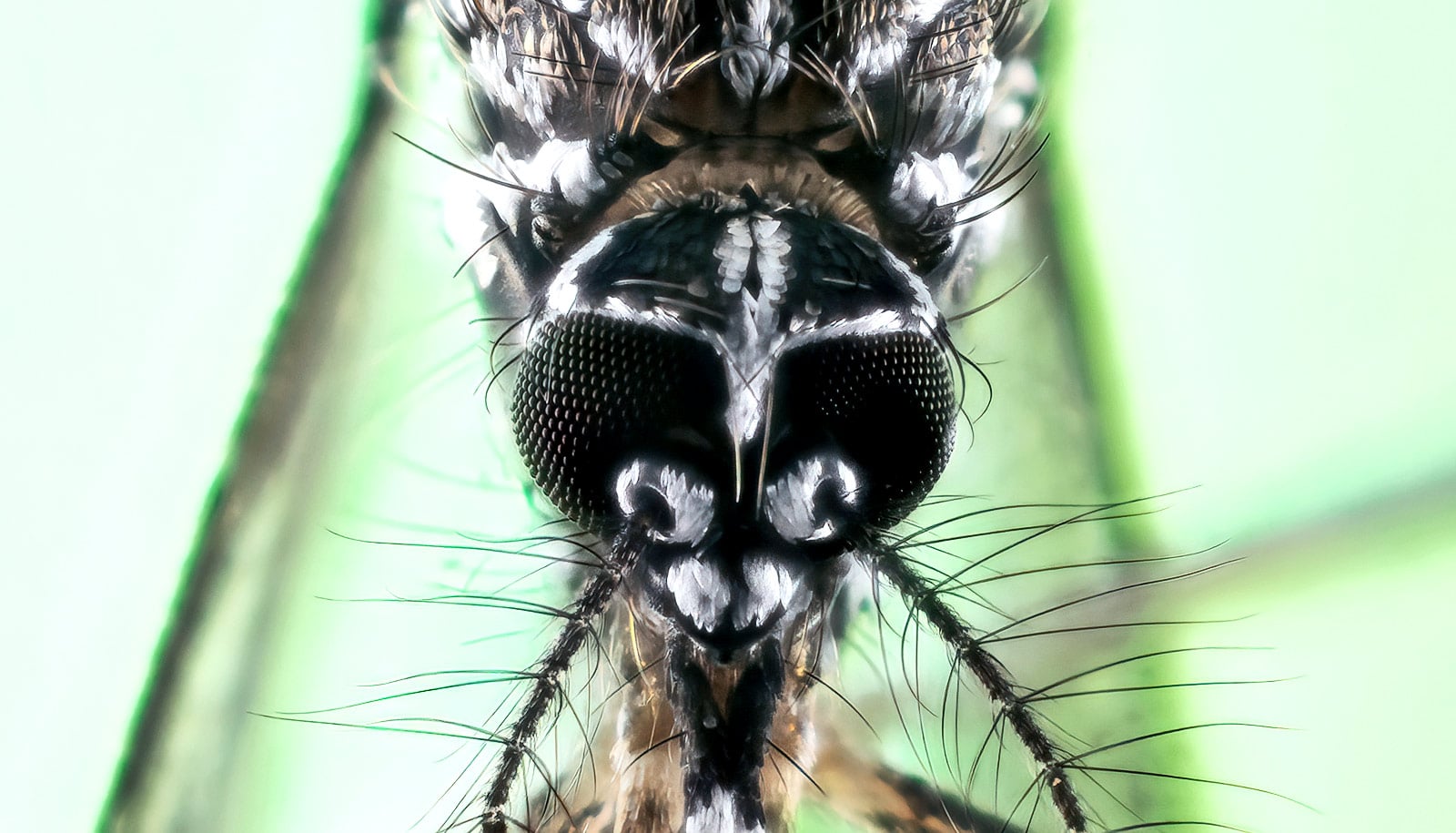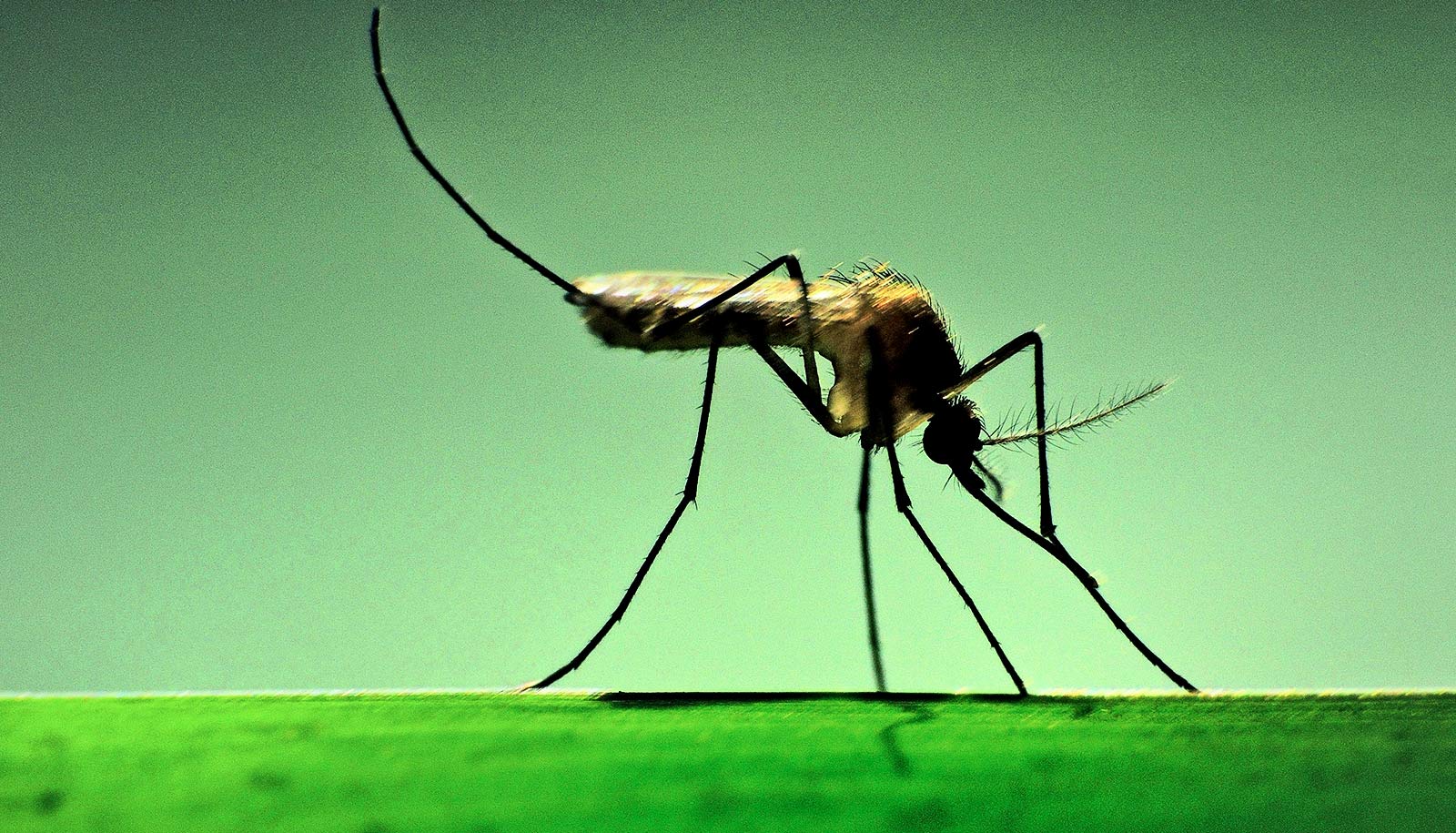A new study is the first to decipher aspects of how mosquitoes use vision to find targets to bite.
Researchers designed the paper to understand how female Aedes aegypti recognize humans visually. The findings show that inactivating the Opsin1 (Op1) and Opsin2 (Op2) receptors disrupts the ability of the mosquito Aedes aegypti to recognize dark targets, which mosquitoes will explore to determine if they are hosts.
“Despite all the interest in studying how mosquitoes detect CO2, organic odors, and temperature, the molecular mechanisms through which mosquitoes identify people visually has been largely ignored,” says Craig Montell, professor of molecular, cellular, and developmental biology at the University of California, Santa Barbara.
“We found that when we introduce mutations that knock out two of the five opsins in the mosquito’s eye, we eliminate CO2-induced target recognition without causing blindness.”
Understanding how vision guides female mosquitoes to a host is particularly pertinent for A. aegypti, which bite during the daytime and serve as a vector for diseases such dengue, yellow fever, Zika, and others that afflict tens of millions of people each year.
Electrodes on mosquito eyes
Mosquitoes have sensitive eyes with low resolution. Once a female mosquito detects a plume of CO2, it becomes more active and begins looking for a host. Generally, this involves flying upwind toward the source of the plume and looking for something dark.
The team took advantage of the insects’ penchant for dark objects by using two spots as targets: a white control spot and a black spot that served as a proxy for an animal host.
Previous mosquito studies have used wind tunnels; however, tunnels are very expensive. So, the team first developed a simpler experimental setup using the two spots in a regular cage. The researchers found that after exposing the mosquitoes to CO2, the insects behaved the same in the cage setup as in wind tunnel tests. This convinced them that their new protocol was reliable.
The team then used three additional assays to gauge the mosquitoes’ vision. The scientists observed the animals’ phototaxis, or their tendency to move toward light. They also connected electrodes to the compound eyes to measure voltage changes in response to light.
Their third assay was the optomotor response. When placed in the center of a rotating cylinder with vertical black and white stripes, the insects begin walking in the direction of rotation. This test provided information as to whether the mosquitoes’ vision was working.
Mosquito vision’s role in finding a host
After settling their methodology, the authors got to work selecting receptors to investigate. They aimed to identify a signaling protein whose absence would eliminate target recognition but not other visual behaviors.
Montell and postdoctoral fellow and lead author Yinpeng Zhan started out using CRISPR/Cas9 to knock out the most abundant vision protein in the insects’ photoreceptor cells: the rhodopsin protein Op1. The resulting mosquitoes behaved identically to the wild types in all of the experimental assays.
The team then targeted Op2—the rhodopsin most related to Op1. Again, the mutant insects behaved normally. It was only when the researchers knocked out both opsins that the resulting insects showed behavioral abnormalities. The redundant role of the two opsins was a bit surprising, Zhan says.
In the cage test, the wild type mosquitoes and both single mutants all sought out the black dot upon exposure to CO2. In the absence of CO2, they showed no preference between the two spots. In contrast, the double mutants continued to show no preference between the dots even after CO2 exposure.
Now Zhan and Montell needed to rule out the possibility that the double mutants had simply been rendered blind. That’s where the three assays came in.
All of the genetic groups displayed positive phototaxis, moving toward light after being exposed to CO2. And they all showed an optomotor response, suggesting that the double mutants could not only still see, but also could make out shading and motion.
When the team tested electrical activity in the insects’ eyes, the wild-type and single mutants all displayed the same activity when exposed to light. And while the eyes of double mutants still responded to light, the voltage drop was about half of that displayed by the normal mosquitoes and single mutants.
What’s more, the double mutants showed healthy eye morphology, so the absence of target recognition was not due to retinal degeneration.
The findings could have broad implications. “Vision plays an important role in detecting a potential host for blood-feeding insects such as mosquitoes, kissing bugs, tsetse flies, and ticks,” Zhan says. All of which serve as vectors for human illnesses. “And this study is the first to uncover the molecular mechanisms behind this behavior.”
“This is the first time that anyone has genetically eliminated vision-guided target attraction,” Montell says. In the future the team plans to identify other signaling proteins involved in in host-seeking, blood-feeding, and nectar feeding behavior in Aedes mosquitos.
The study appears in Current Biology. Additional coauthors are from the University of Washington.
Source: UC Santa Barbara


